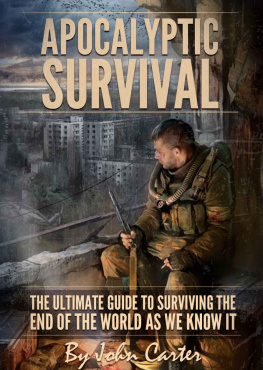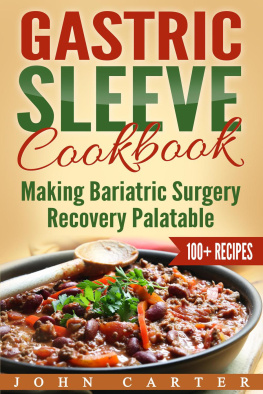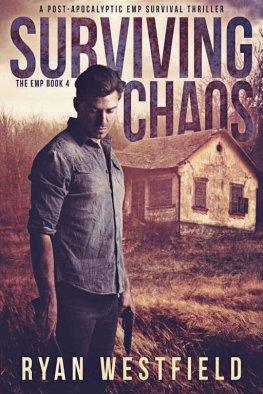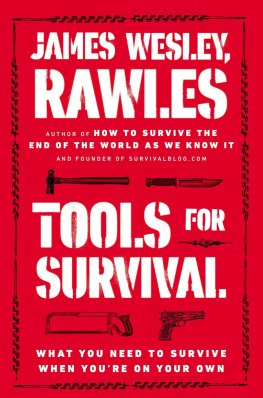APOCALYPTIC
SURVIVAL
THE ULTIMATE GUIDE TO SURVIVING THE END OF THE WORLD AS WE KNOW IT
JOHN CARTER
Introduction
Cities developed organically from the earliest times in human history, presumably for the mutual survival and upliftment of all those who were a part of it. The city became the locus for heightened social interaction, where farmers could barter and sell their goods to the far reaches of the domain and where the brightest and the best could answer your questions and resolve your needs, whether technical, medical or some other issue. Its obvious why cities developed, although they have not always been so altruistic.
We know, for example, that the great Mayan cities most likely had theocratic rulers whose orders were law, and sometimes, that worked well. But it could also spell the demise for the city if deluded, self-important, fanatical leaders saw themselves as more important than the people. Right here, in North America, there was the great city of Cahokia in what is now Illinois, which emerged, dominated, changed and improved the lives of everyone it touched. Then, for various reasons, it disappeared.
Cities and civilizations arise out of the common interests of those they serve, and they seem to follow a pattern of growth: peaking, declining, disappearing.
Every school child has heard about the great Roman empire and how it fell. We study the details and shake our heads at the Roman stupidity that allowed such greatness to fall. Unfortunately, some here, in the United States, believe that such a thing will never happen to us. Really? Well, we dont want it to happen to us, of course, but consider that a civilization is a living, dynamic entity. Its essence, character and health are all determined by the collective mindset and collective actions of all the participants, whether you recognize that or not. And it does seem to more and more of us that the collective mindset is too often about short-term gains and not about the health, survival and vitality of the city, the culture and our civilization.
If youre one of those people, that probably explains why youre reading American Survival Guide. We arent sure exactly where we are as a people in the curve of the decline of a civilization or whether we can affect that decline. However, there is always something an individual can do. To gain a higher perspective of what you can do in your own life, in your own family and in your own town, I strongly encourage you to read Morris Bermans The Twilight of American Culture. There are lots of good ideas in this book. In addition, continue to read American Survival Guide for the practical details of what you can do now to improve your survival quotient in the cityand in the wilderness.
In this book, we provide you with many thought-provoking sections about what can (and often does) occur when our modern structures break downeither from the ravages of nature or from man, himself (war, terrorism, disease, etc.).
When Disaster Strikes
The first section of this book will deal with immediate response to take after a disaster. We will talk about disaster preparedness in the second half. The first step is to not panic, and assess yourself and your surroundings.
First Three Steps to Take in any Emergency
The sudden impact of realizing you are in a possible life-or death survival situation can make your mind and body go into shock. Panic can set in almost instantly. Your heart starts to race, your blood pressure begins to skyrocket, and sweat immediately saturates your clothing.
Your brain doesnt function as it should under such a stressful situation. Rational thoughts disappear, only to be replaced with illogical thinking and bad, impulsive decisions. This can turn your dire situation into something much, much worse. Although it is natural for most people to react in such a way due to fear of the unknown, it can be corrected with a basic game plan that should be thought through well before any emergency situation occurs.
This pre- preparation is not specific to any type of disaster or survival situation. In fact, it is general enough to be applied to nearly any urban or rural natural disaster, manmade threat or as a result of a persons own misfortune by having an accident or being in the wrong place at the wrong time.
The strategy to avoid panic and unnecessary risks is for you to assess your crucial three zones of survival. By doing so, you will formulate a plan, stay focused and find a way out of whatever situation that has you fighting for your very survival.
Step 1: Assess Personal Space
The first zone to assess is yourself and the gear you have with you. This should be done immediately after an emergency strikes. First, take a few moments and calm yourself. You cant think properly if youre in panic mode. Stop moving, sit and relax. Examine yourself first for any noticeable injuries. This includes obvious injuries such as cuts, scrapes, bruises or bumps on your head, as well as less-obvious ones, such as sprained fingers, hands or swollen ankles. After a traumatic physical ordeal, your bodys adrenalin and state of shock might still be present, masking these ailments. But once it wears of, the injuries should be very apparent and ready to treat. Do what you can to keep your wounds clean, and use pieces of your clothing as bandages and slingsor, in a worst-case scenario, a tourniquet.
Once your medical issues are taken care of, its time to evaluate the possible uses of any items you have on your person. Even the most simple of items have their uses: Pens can be used as straws to sip clean water, where available. Shoelaces provide cordage for survival projects, such as a bow drill fire-starter, homemade bolas for hunting or even primitive snare traps used to catch small game.
Your eyeglass lenses can become solar fire-starters, and their metal frames can be shaped into fishing hooks. Shavings from your cotton socks make great tinder, and your cell-phone can give you a multitude of survival uses, including a battery to create fire. Its glass cover can be broken and used as a knife, and the metallic shell can help reflect sunlight to send a rescue signal.
Think outside the box as you take inventory of your available supplies. Focus on the four core categories of survival: fire, shelter, water and foodand how your personal items can contribute to obtaining oneor hopefully, all four. You might be pleasantly surprised how many uses you can create.
Step 2: Assess Surroundings
The next zone to assess comprises your immediate surroundings. This includes the area where you will make your short-term home until you are rescued or when you decide to venture out on your own. Examine the area for possible natural hazards, including uneven ground, tripping hazards such as stumps or roots, or dead tree branches overhead that could fall on you during a rough storm. Second, notice if you have any water sources close by. Within a matter of days, you will be beyond thirsty and needing water desperately.
If long-term survival is necessary, easily accessible water must be within close proximity to your location. Lakes, rivers and small ponds would be obvious sources, but natural springs bubbling up from the ground, small streams of water trickling down rocks or even large leaves able to catch rainwater are suitable secondary options. Food sources should also be scouted within your immediate area. Do you notice any signs of wildlife? Birds, small game and fish in the nearby water bodies are all possible food sources. Look for tracks in the soil, trails created by thirsty animals heading to water, or bubbles and ripples on the waters surface for indications of fish or other aquatic animals.
After your initial search for possible food and water sources, its time to focus on shelter and fire. Are there natural materials nearby to create even a primitive shelter to protect you from the elements? These would include natural rock formations, fallen trees, naturally concaved terrain and other structures that could be your starting point for a shelter. The next order of business is to hunt down sufficient amounts of leaves, bark, moss, etc. that could be used for insulation and crack-sealer to keep out the rain and allow you to stay dry and warm. Finally, fire is a must, so firewood must be plentiful and easy to gather. Additionally, search for materials that would make great tinder, such as bird and squirrel nests, thick, dry grasses or cotton-like plants such as pussy willows.
Next page















